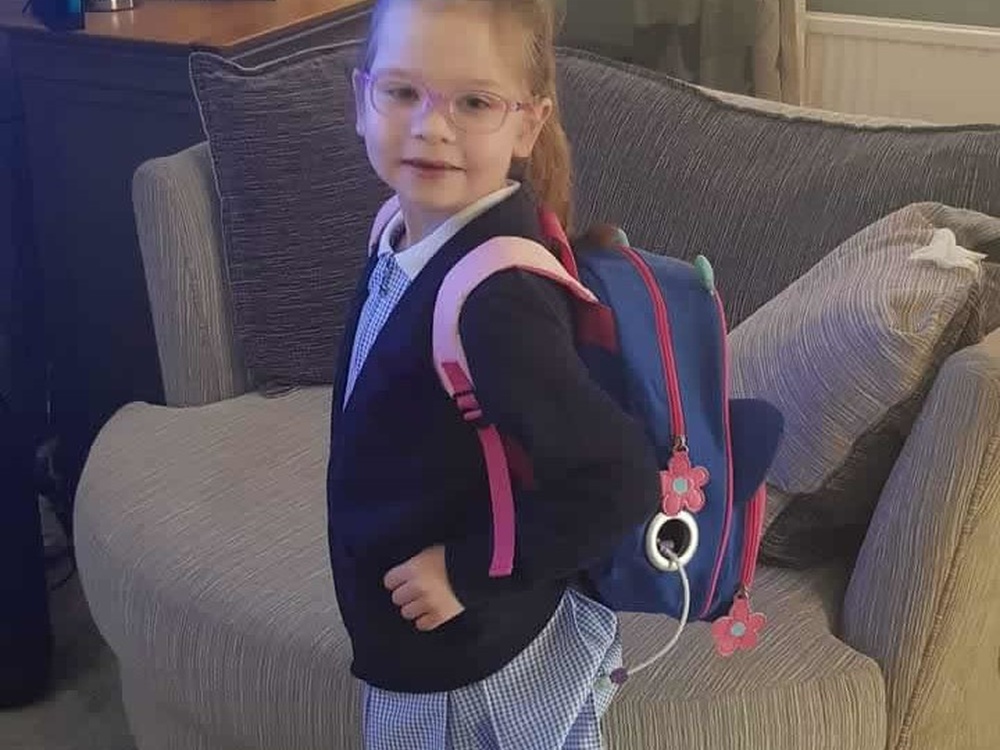Feeding tubes play a critical role in the care of children and adults who are unable to eat or swallow safely. Despite their importance, feeding tubes are often misunderstood. Ella’s journey highlights how these devices can significantly improve quality of life and wellbeing.
When Ella was born, she struggled with breathing and feeding right away. Kirsty, her mum and a parent of four, instinctively knew something was wrong. Every bottle feed ended in choking, coughing and distress. Initially doctors put these symptoms down to colic or reflux, but Ella’s condition worsened.
The situation came to a head when Ella had her third dose of polio drops. Her lips turned blue and she began choking, prompting an emergency trip to the hospital. Doctors eventually discovered that Ella was aspirating, meaning milk was entering her lungs rather than her stomach, increasing her risk of a chest infection.
Starting tube feeding: a life-changing decision
Doctors quickly placed Ella on a nasal (NG) tube, explaining to Kirsty and her husband that this would help keep Ella safe and nourished. Initially, it was a challenging adjustment for the family. Kirsty recalls the fear of doing something wrong and the difficulty of managing the tube. Nurses provided valuable support, but incidents like the tube being accidentally pulled out reinforced the need for Kirsty to learn how to reinsert it herself.
She learnt quickly, which of course was a real benefit to Ella since that precious tube was providing her with all the nutrition she needed. However nasal tube feeding isn’t without its complications, especially if it doesn’t get put into the right place or moves around, so when Ella was offered a PEG feeding tube (a device inserted directly into the stomach) just before her first birthday, the family didn’t hesitate.
Unlike the nasal tube, the PEG was more secure and effective. After surgery, Ella immediately stopped coughing and choking, began smiling and looked visibly healthier – a turning point for her and her family.
A mitochondrial disease diagnosis
In the meantime, more tests followed, mainly from a genetic perspective, to see why Ella was encountering these challenges. All the tests came back clear, making for a very confusing time for Ella’s parents. Finally hypotonia, also known as floppy muscle syndrome, was diagnosed, and Ella was referred to a neurologist who said they would simply need to keep an eye on Ella to see how she developed. It wasn’t until much later on that the mitochondrial disease diagnosis was finally made.
That diagnosis provided much-needed clarity after years of tests and medical uncertainty. Today, at seven years old, Ella uses her PEG tube daily, receiving nutrition, hydration and medication with ease. It’s become part of her routine, allowing her to enjoy life whilst minimising hospital visits.
How tube feeding supports Ella’s life
Ella’s feeding tube doesn’t hold her back – it enables her to thrive. While she’s connected to the tube overnight and during three daytime feeds, for the rest of the time she’s free to play, go to school and even enjoy small amounts of soft food by mouth, such as her favourite spaghetti Bolognese.
At family meals, Ella loves having her own plate to pick at. At school, she sits with her friends and nibbles on her packed lunch, although on tiring days, she chooses a quieter space to rest. Kirsty leaves it up to Ella to make that decision – she’s always very vocal about how she’s feeling!
For Kirsty, the PEG tube has been life-changing, not just for Ella’s health but for the whole family’s wellbeing. With fewer hospital visits, Ella can recover at home if she’s unwell, making life more comfortable for everyone.
A life-saving device
“If it wasn’t for that tube, Ella wouldn’t be here”, says Kirsty. “Whoever invented it is amazing! It really has changed our lives.”
Ella has never questioned why she has a feeding tube, and her parents have made it a normal part of life. When it’s not in use, neither the tube nor the button are visible, but if anyone does ask about it, Kirsty feels gratitude for how far Ella has come.
While managing a feeding tube can sometimes be tough, Kirsty draws strength from The Lily Foundation’s supportive community. Through Facebook groups and connections with other families, she’s found a space where people understand the unique challenges and joys of caring for a child with mitochondrial disease.
Marking Feeding Tube Awareness Week
Feeding Tube Awareness Week is a chance to shine a light on how feeding tubes can save lives and improve outcomes for patients like Ella. Thanks to her PEG tube, Ella has the nutrition and energy she needs to live her best life. For Kirsty, the device symbolises hope and resilience – a simple tool that has truly transformed their family’s journey.

